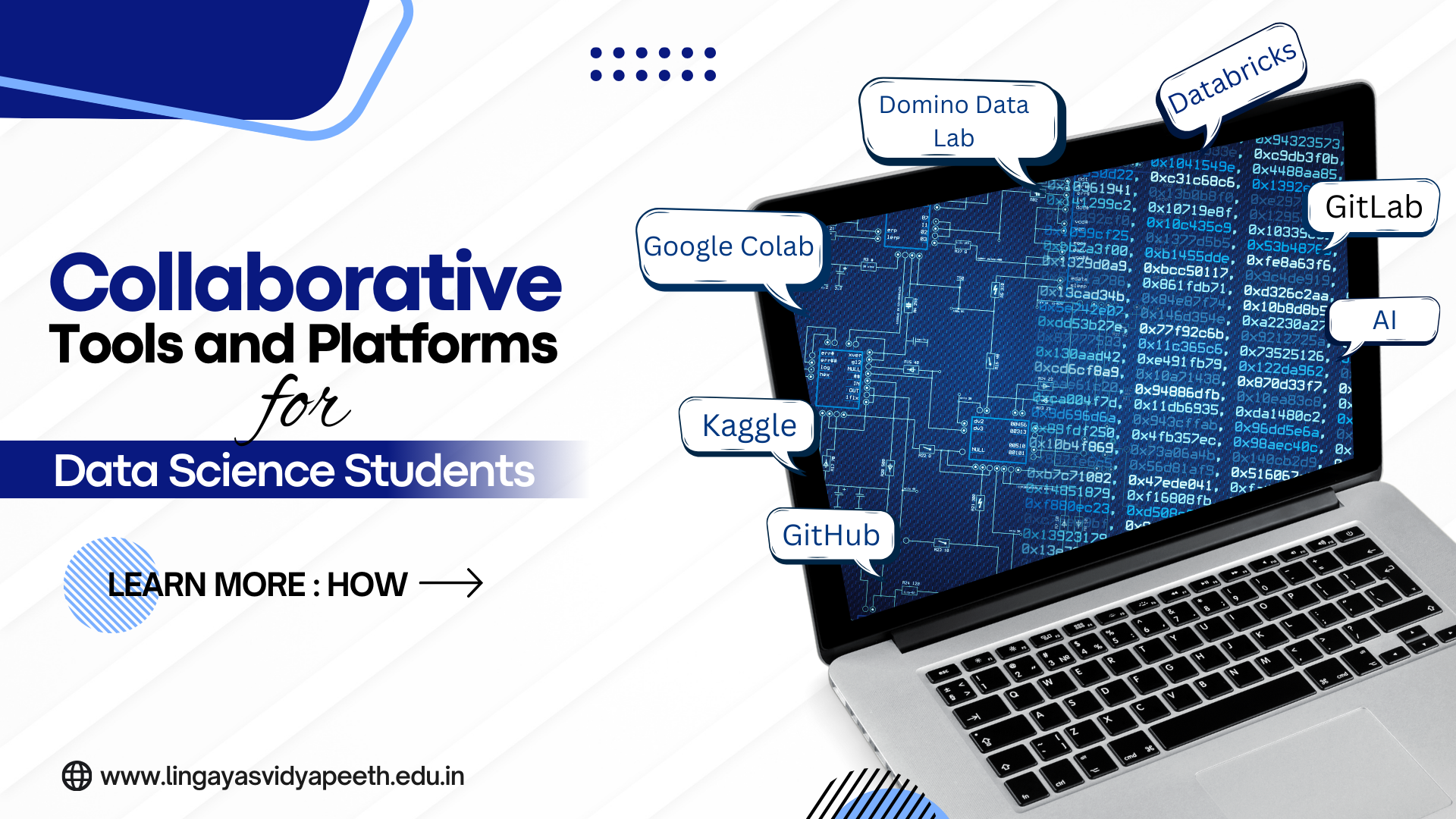
Home » What are the Top Collaborative Tools and Platforms for Data Science Students?

In today’s data-driven world, collaboration is crucial for data science projects. Sharing insights, working together on datasets, and combining expertise can result in innovative solutions and breakthroughs. To assist this collaborative process, a variety of tools and platforms have emerged specifically designed for data science students.
What Is Data Mining? A Complete Guide
Essential AI Tools for Computer Science Students
Conclusion-
By using these collaborative tools and platforms, data science students can enhance their teamwork, share knowledge, and achieve better results. The right tools can make a significant difference in the efficiency and effectiveness of data science projects.
Choose the best engineering colleges in Delhi NCR– Lingaya’s Vidyapeeth to pursue BTech CSE in Data Science. We offer a cutting-edge curriculum, expert faculty, state-of-the-art infrastructure and industry collaborations, empowering you to become a future leader in the field of data sciences. So, what are you waiting for? Enroll today at Lingaya’s Vidyapeeth!
From
Ms. Shivani Bansal
Asst. Professor in CSE Dept.
Lingaya’s Vidyapeeth
B.Tech Data Science Engineering Colleges in Faridabad
RECENT POSTS
CATEGORIES
TAGS
Agriculture Agriculture future AI Architecture Architecture design artificial intelligence BA Psychology BTech CSE BTech Engineering Business management career Career-Specific Education career guide Career Opportunities career option career scope Civil engineering commerce and management Computer Science Computer science engineering Data science degree education Engineering Engineering students English Literature english program Exam tips Fashion Design Fashion design course Higher Education Journalism journalism and mass communication law Law career Machine Learning MA Psychology Master degree mathematics MBA Mechanical Engineering Pharmacy Psychology Research and Development students
University Address: Nachauli, Jasana Road, Faridabad, Haryana
Toll Free: 1800-120-4613
Mobile : 8447744303 | 8447744304 | 8447744306 | 8447744309
Address: C-72, Second Floor, Shivalik, Near Malviya Nagar,
Above HDFC Bank, New Delhi 110017
Ph.No. - 011-46570515 / 45138169 / 41755703 / +91-7303152412
Jagmani Kutir, Ground Floor, Road No-1, Rajeev Nagar,
Near Darbar Marriage Hall, Patna-800024, Bihar
Contact No: 9818352069/ 8130120095
Mail: kanhaiya@lingayasvidyapeeth.edu.in
Copyrights © 1998 - 2025 Lingaya's Vidyapeeth (Deemed To Be University). All rights reserved.
It is important to note that the following email IDs and domains are fraudulent and do not belong to our university.
LV only conducts physical/online verification of any document related to examination on the following email id: